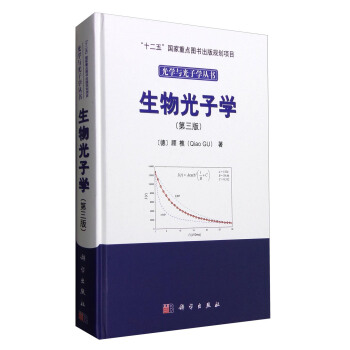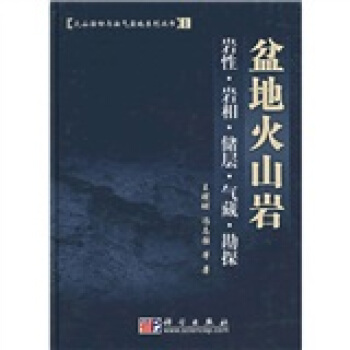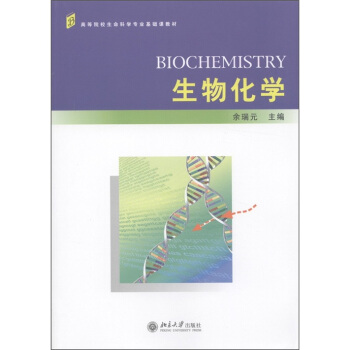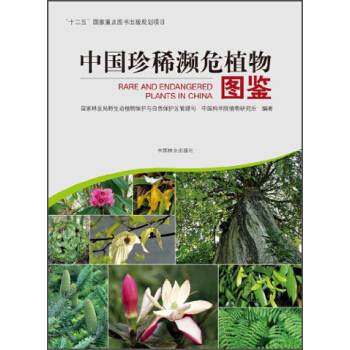![亚原子物理学(第3版) [Subatomic Physics Third Editon]](https://pic.windowsfront.com/11647746/54e1b516N3af31985.jpg)

具体描述
内容简介
Subatomic Physics, the physics of nuclei and particles, has been one of the frontiers of science since its birth in 1896. From the study of the radiations emitted by radioactive nuclei to the scattering experiments that point to the presence of subLuuts in nucleons, from the discovery of the hadroruc interactions to the real-ization that the photon possesses hadronic (strong) attributes, and that weak and electromagnetic forces may be intimately related, subatomic physics has enriched science with new concepts and deeper insights into the laws of nature.Subatomic Physics does not stand isolated; it bears on many aspects of life. Ideas and facts emerging from studies of the subatomic world change our picture of the macrocosmos. Concepts discovered in subatomic physics are needed to under-stand the creation and abundance of the elements, and the energy production in the sun and the stars, Nuclear power may provide most of the future energy sources.Nuclear bombs affect national and international decisions. Pion beams have be- come a tool to treat cancer. Tracer and Mossbauer techniques give information about structure and reactions in solid state physics, chemistry, biology, metallurgy, and geology.
内页插图
目录
DedicationAcknowledgments
Preface to the First Edition
Preface to the Third Edition
General Bibliography
1 Background and Language
1.1 Orders of Magnitude
1.2 Units
1.3 Special Relativity,Feynman Diagrams
1.4 References
Ⅰ Tools
2 Accelerators
2.1 Why Accelerators?
2.2 Cross Sections and Luminosity
2.3 Electrostatic Generators (Van de Graaff)
2.4 Linear Accelerators (Linacs)
2.5 Beam Optics
2.6 Synchrotrons
2.7 Laboratory and Center-of-Momentum Frames
2.8 Colliding Beams
2.9 Superconducting Linacs
2.10 Beam Storage and Cooling
2.11 References
3 Passage of Radiation Through Matter
3.1 Concepts
3.2 Heavy Charged Particles
3.3 Photons
3.4 Electrons
3.5 Nuclear Interactions
3.6 References
4 Detectors
4.1 Scintillation Counters
4.2 Statistical Aspects
4.3 Semiconductor Detectors
4.4 Bubble Chambers
4.5 Spark Chambers
4.6 Wire Chambers
4.7 Drift Chambers
4.8 Time Projection Chambers
4.9 Cerenkov Counters
4.10 Calorimeters
4.11 Counter Electronics
4.12 Electronics: Logic
4.13 References
Ⅱ Particles and Nuclei
5 The Subatomic Zoo
5.1 Mass and Spin.Fermions and Bosons
5.2 Electric Charge and Magnetic Dipole Moment
5.3 Mass Measurements
5.4 A First Glance at the Subatomic Zoo
5.5 Gauge Bosons
5.6 Leptons
5.7 Decays
5.8 Mesons
5.9 Baryon Ground States
5.10 Particles and Antiparticles
5.11 Quarks,Gluons,and Intermediate Bosons
5.12 Excited States and Resonances
5.13 Excited States of Baryons
5.14 References
6 Structure of Subatomic Particles
6.1 The Approach: Elastic Scattering
6.2 Rutherford and Mott Scattering
6.3 Form Factors
6.4 The Charge Distribution of Spherical Nuclei
6.5 Leptons Are Point Particles
6.6 Nucleon Elastic Form Factors
6.7 The Charge Radii of the Pion and Kaon
6.8 Inelastic Electron and Muon Scattering
6.9 Deep Inelastic Electron Scattering
6.10 Quark-Parton Model for Deep Inelastic Scattering
6.11 More Details on Scattering and Structure
6.12 References
Ⅲ Symmetries and Conservation Laws
7 Additive Conservation Laws
7.1 Conserved Quantities and Symmetries
7.2 The Electric Charge
7.3 The Baryon Number
7.4 Lepton and Lepton Flavor Number
7.5 Strangeness Flavor
7.6 Additive Quantum Numbers of Quarks
7.7 References
8 Angular Momentum and Isospin
8.1 Invariance Under Spatial Rotation
8.2 Symmetry Breaking by a Magnetic Field
8.3 Charge Independence of Hadronic Forces
8.4 The Nucleon Isospin
8.5 Isospin Invariance
8.6 Isospin of Particles
8.7 Isospin in Nuclei
8.8 References
9 P,C,CP,and T
9.1 The Parity Operation
9.2 The Intrinsic Parities of Subatomic Particles
9.3 Conservation and Breakdown of Parity
9.4 Charge Conjugation
9.5 Time Reversal
9.6 The Two-State Problem
9.7 The Neutral Kaons
9.8 The Fall of CP Invariance
9.9 References
Ⅳ Interactions
10 The Electromagnetic Interaction
10.1 The Golden Rule
10.2 Phase Space
10.3 The Classical Electromagnetic Interaction
10.4 Photon Emission
10.5 Multipole Radiation
10.6 Electromagnetic Scattering of Leptons
10.7 Vector Mesons as Mediators of the Photon-Hadron Interaction
10.8 Colliding Beams
10.9 Electron-Positron Collisions and Quarks
10.10 The Photon-Hadron Interaction: Real and Spacelike Photons
10.11 Magnetic Monopoles
10.12 References
11 The Weak Interaction
11.1 The Continuous Beta Spectrum
11.2 Beta Decay Lifetimes
11.3 The Current-Current Interaction of the Standard Model
11.4 A Variety of Weak Processes
11.5 The Muon Decay
11.6 The Weak Current of Leptons
11.7 Chirality versus Helicity
11.8 The Weak Coupling Constant GF
11.9 Weak Decays of Quarks and the CKM Matrix
11.10 Weak Currents in Nuclear Physics
11.11 Inverse Beta Decay: Reines and Cowan's Detection of Neutrinos
11.12 Massive Neutrinos
11.13 Majorana versus Dirac Neutrinos
11.14 The Weak Current of Hadrons at High Energies
11.15 References
12 Introduction to Gauge Theories
12.1 Introduction
12.2 Potentials in Quantum Mechanics-The Aharonov-Bohm Effect
12.3 Gauge Invariance for Non-Abelian Fields
12.4 The Higgs Mechanism;Spontaneous Symmetry Breaking
12.5 General References
13 The Electroweak Theory of the Standard Model
13.1 Introduction
13.2 The Gauge Bosons and Weak Isospin
13.3 The Electroweak Interaction
13.4 Tests of the Standard Model
13.5 References
14 Strong Interactions
14.1 Range and Strength of the Low-Energy Strong Interactions
14.2 The Pion-Nucleon Interaction-Survey
14.3 The Form of the Pion-Nucleon Interaction
14.4 The Yukawa Theory of Nuclear Forces
14.5 Low-Energy Nucleon-Nucleon Force
14.6 Meson Theory of the Nucleon-Nucleon Force
14.7 Strong Processes at High Energies
14.8 The Standard Model,Quantum Chromodynamics
14.9 QCD at Low Energies
14.10 Grand Unified Theories,Supersymmetry,String Theories
14.11 References
Ⅴ Models
15 Quark Models of Mesons and Baryons
15.1 Introduction
15.2 Quarks as Building Blocks of Hadrons
15.3 Hunting the Quark
15.4 Mesons as Bound Quark States
15.5 Baryons as Bound Quark States
15.6 The Hadron Masses
15.7 QCD and Quark Models of the Hadrons
15.8 Heavy Mesons: Charmonium,Upsilon
15.9 Outlook and Problems
15.10 References
16 Liquid Drop Model,Fermi Gas Model,Heavy Ions
16.1 The Liquid Drop Model
16.2 The Fermi Gas Model
16.3 Heavy Ion Reactions
16.4 Relativistic Heavy Ion Collisions
16.5 References
17 The Shell Model
17.1 The Magic Numbers
17.2 The Closed Shells
17.3 The Spin-Orbit Interaction
17.4 The Single-Particle Shell Model
17.5 Generalization of the Single-Particle Model
17.6 Isobaric Analog Resonances
17.7 Nuclei Far From the Valley of Stability
17.8 References
18 Collective Model
18.1 Nuclear Deformations
18.2 Rotational Spectra of Spinless Nuclei
18.3 Rotational Families
18.4 One-Particle Motion in Deformed Nuclei (Nilsson Model)
18.5 Vibrational States in Spherical Nuclei
18.6 The Interacting Boson Model
18.7 Highly Excited States;Giant Resonances
18.8 Nuclear Models-Concluding Remarks
18.9 References
19 Nuclear and Particle Astrophysics
19.1 The Beginning of the Universe
19.2 Primordial Nucleosynthesis
19.3 Stellar Energy and Nucleosynthesis
19.4 Stellar Collapse and Neutron Stars
19.5 Cosmic Rays
19.6 Neutrino Astronomy and Cosmology
19.7 Leptogenesis as Basis for Baryon Excess
19.8 References
Index
前言/序言
用户评价
这本书的装帧设计给我留下了非常深刻的印象。封面采用了简洁而有力的设计风格,主色调是一种深邃的蓝色,仿佛蕴含着宇宙的奥秘,辅以银色的标题字体,低调却不失质感。翻开书页,纸张的触感非常舒适,是一种略带磨砂感的优质纸张,厚度适中,翻页时不会有廉价的飘忽感。印刷质量也相当不错,文字清晰锐利,即使是复杂的公式和图表也丝毫不会模糊。装订非常牢固,书脊处采用了锁线装订,这意味着即使经常翻阅,书本也能保持良好的形态,不会出现散页的情况。而且,书本的尺寸也很适合单手握持,无论是坐在书桌前深入研读,还是随身携带到图书馆或咖啡馆,都显得十分便捷。封面上的艺术家签名(如果有的话)或者作者的简笔画(如果有的话)为这本书增添了一份独特的人文气息,让它不仅仅是一本学术著作,更像是一件值得珍藏的艺术品。整体来说,从拿起这本书的那一刻起,就能感受到一种严谨、专业且充满诚意的态度,这对于一本专业书籍来说,是至关重要的第一印象。
评分这本书的语言风格让我感觉非常亲切,不像一些同类书籍那样充斥着晦涩难懂的术语和故弄玄虚的表达。作者在解释复杂的物理现象时,总是能够用一种清晰、逻辑性强的语言来阐述,即使是我初次接触到的概念,也能通过他的解释逐步理解。他善于运用类比和形象的比喻,将抽象的粒子行为描绘得生动形象,仿佛就在眼前。这种“润物细无声”的教学方式,让我能够从内心深处产生共鸣,而不是被动地接受信息。有时,作者还会穿插一些有趣的科学史故事或者科学家的小轶事,这些细节的加入,不仅活跃了文章的氛围,还让我感受到了科学研究的魅力和人情味。阅读这本书的过程,就像是与一位经验丰富、耐心细致的导师在进行一场深入的对话,他总能恰到好处地引导我思考,激发我的好奇心。这种愉悦的学习体验,是很多技术性书籍难以给予的。
评分我特别欣赏这本书在排版和章节结构上的精心设计。打开目录,就能清晰地看到知识体系的脉络,每个章节的标题都既概括又引人入胜,让我能够快速地把握全书的整体框架。进入正文部分,段落之间的空隙恰到好处,既保证了阅读的流畅性,又避免了信息堆积带来的压迫感。重点内容,如关键概念、定理或公式,会通过加粗、斜体或者单独的框线进行突出显示,这对于初学者或者需要快速定位信息的读者来说,简直是福音。书中穿插的插图和图表也并非点缀,而是起到了至关重要的辅助作用。它们不仅直观地展示了复杂的物理概念,还帮助我理解抽象的理论。例题的设置也十分巧妙,从基础的计算到稍有难度的应用,层层递进,让我能够逐步巩固所学知识。每章结尾的学习要点总结,更是能够帮助我回顾本章的核心内容,加深理解。此外,书末附带的参考资料和索引也非常详尽,方便我进一步深入研究和查找相关信息。可以说,这本书在形式上就已经为高效的学习奠定了坚实的基础。
评分这本书在内容呈现上,我认为达到了一个非常高的水平。它不仅仅是知识的堆砌,更是一种思想的传递。作者在阐述每个理论时,都会追溯其历史渊源,介绍相关的实验证据,并指出其在整个物理学体系中的位置和意义。这种宏观的视角,让我能够跳出枝节,看到学科发展的全貌,理解每个知识点的来龙去脉。书中对于前沿理论的介绍,也并非简单罗列,而是能够深入浅出地解析其核心思想和潜在影响。让我印象深刻的是,作者在讨论某个实验现象时,会详细描述实验的原理、过程以及可能遇到的困难,这让我不仅仅是学习了结果,更体会到了科学研究的严谨性和探索精神。此外,书中在数学推导部分,也力求清晰明了,步骤完整,不会让读者感到突兀或难以理解。对于需要深入理解数学工具的读者,这本书提供了坚实的支撑。
评分这本书给我带来的最大收获,在于它所传递的科学思维方式。作者在讲解每一个概念时,不仅仅是给出定义,更重要的是引导读者去理解这个概念是如何被构建出来的,它解决了什么问题,又带来了什么新的疑问。他鼓励读者质疑、思考,而不是盲目接受。在分析问题时,他会展示多种不同的思考角度和分析方法,让我学会如何灵活运用所学的知识。书中也时常会提到一些未解之谜和当前研究的热点,这让我意识到科学研究是一个不断发展的过程,总有新的疆域等待探索。这种开放性的思维模式,对于我今后的学习和科研道路,无疑具有重要的启示意义。这本书不仅仅是一本教科书,更像是一份科学精神的启蒙,让我对探索未知世界充满了更加浓厚的兴趣和信心。
相关图书
本站所有内容均为互联网搜索引擎提供的公开搜索信息,本站不存储任何数据与内容,任何内容与数据均与本站无关,如有需要请联系相关搜索引擎包括但不限于百度,google,bing,sogou 等
© 2025 book.coffeedeals.club All Rights Reserved. 静流书站 版权所有

![中国环境百科全书选编本:核与辐射安全 [Nuclear and Radiation Safety] pdf epub mobi 电子书 下载](https://pic.windowsfront.com/11688154/5563ce3fN56fa233d.jpg)







![物质运动与时空结构:惯性力、“暗物质”、“暗能量” [Motion of Matter and Space Time: Inertial force, "Dark Matter", "Dark Energy"] pdf epub mobi 电子书 下载](https://pic.windowsfront.com/11362539/rBEhVlKnx2oIAAAAAANlGqxuOQ8AAGvRwBvfo8AA2Uy489.jpg)

![IMO50年(第4卷 1974-1978) [International Mathematical Olympiads] pdf epub mobi 电子书 下载](https://pic.windowsfront.com/11923285/575fd451Nd3e41e0d.jpg)
![美国数学图画书:孤单的阿乔 [A Remainder Of One] pdf epub mobi 电子书 下载](https://pic.windowsfront.com/11929062/57481711N6077dcb0.jpg)
![生命之网:这里是湿地 [5-8岁] pdf epub mobi 电子书 下载](https://pic.windowsfront.com/11986178/57e8ebdfNdc8b083b.jpg)






